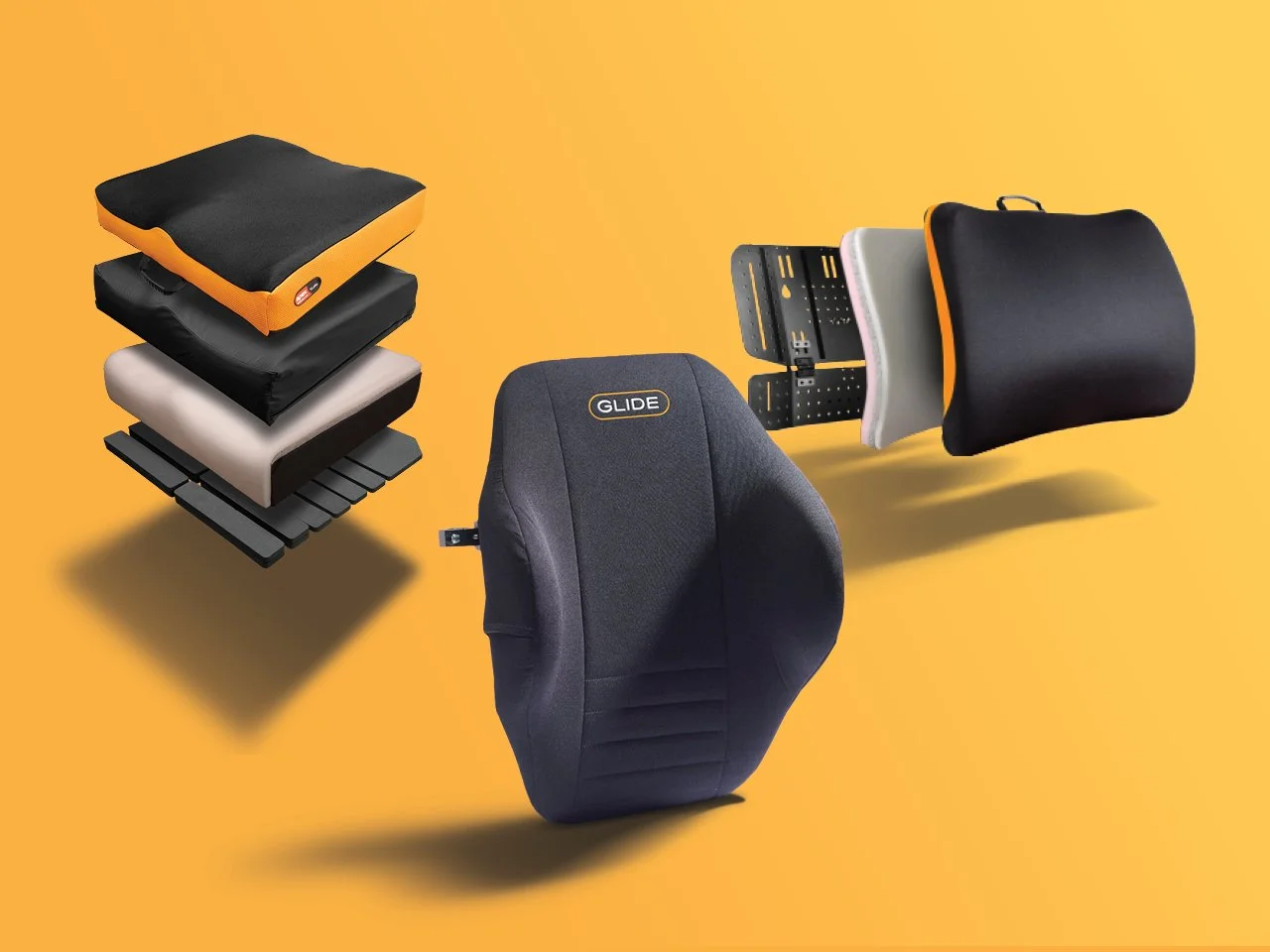Importance of backrests and cushions in wheelchair seating postures
When you spend a significant amount of your day in a wheelchair, comfort is priority number one. Glide wheelchairs can be scripted with fully-customised cushioning, plus headrest, backrest, armrest and footrest options to ensure a made-to-measure comfortable fit.
Backrest support.
A carefully chosen backrest provides proper postural support for the wheelchair user, maximises functionality and comfort, and also helps reduce fatigue. An expertly fitted backrest can also assist with pressure care needs, support asymmetrical spinal postures and be adjustable for changing postural needs based on the degree of support a user might require.
Backrest supports vary in style. You can select a fixed, removable, foldable, or height-adjustable backrest. Plus there are options for single piece or segmented backrests.
It’s important to determine the correct height, back width and proper level of support needed for the user. Backrests with lateral back supports, for example, are usually lightweight with a contoured back shell, soft foam, and easily-adjustable pieces that provide stability.
Glide manufactures Pelvic Support, Thoracic Support and Flat Backrests.
We also use specialist backrest solutions from suppliers like Spex, Varilite, Jay and NXT. Backrests and cushions are also available in a bariatric range.
To see these wheelchair backrest options, including links to our specialist suppliers, visit our Cushions and Backrests page.
Adaptive seating.
The right seating makes a world of difference when it comes to user comfort in manual and electric wheelchairs.
A good quality cushion should not only deliver day-long comfort, but it should also improve overall movement and function, limit the wheelchair user from sliding, provide stable pelvic support and pressure relief, plus re-distribute weight evenly. Cushions are generally available in foam, gel, air, or a combination of these materials.
Glide stocks specialist cushioning systems from Spex, Varilite, Trulife Relax, Vicair and Roho.
All cushions and backrests come standard with an outer cover made from materials such as Dartex, Lycra or Aero mesh. Most have an inner cover fabric to help protect the integrity of the cushion. The choice is yours.
When choosing the cover, consider how it can best help your clients in promoting the best skin health and positioning. Cushion covers made from materials like Lycra and Dartex are stretchable. Aero mesh material draws heat and moisture away from the user. Other covers or inner covers can be made of fluid or incontinence-resistant material to prevent moisture entering the cushion and allow for a simple and easy wipe-down.
And, of course, cushion fabric colours can be specified to either match, complement or contrast with your wheelchair colour for personalised customisation.
To see our seating options, including links to our specialist suppliers, visit our Seating Positioning page.

